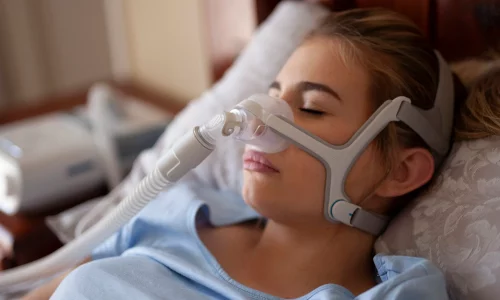Obstructive Sleep Apnea – Symptoms and Causes
You may have heard about obstructive sleep apnosis, but what does it look like, and how can you treat it? This article explains some of the basics. It will also discuss what you can do to prevent this disorder from affecting your sleep. Once you have identified the symptom, you can go on to get the treatment you need or inquire some more details on pediatric obstructive sleep apnea Los Angeles CA.
Symptoms
If you notice shortness of breath, snoring, or gasping while you are sleeping, you likely have an obstructive sleep ap, also known as OSA. This condition can affect your sleep and affect your daily life. You may also experience drowsiness and difficulty concentrating during the day. In addition, some people experience multiple awakenings throughout the night. Regardless of the cause of your snoring, it is important to get checked out by a medical professional.
The symptoms of obstructive sleep afflict as many people as it affects the overall quality of life. While most patients don’t realize they suffer from obstructive sleep apnea, their bed partners or housemates often notice them. The condition can also cause poor concentration, fatigue, and even accidents. It can affect your relationships with your bed partner. Although obstructive sleep apnea is not common, it is important to see a physician if you’re experiencing any of these symptoms.
Parents may notice that their child’s snoring is accompanied by increased infections, including ear, sinus, and tonsils. Some children with OSA also have frequent infections and may have other conditions, such as allergies, sinus problems, or irritable bowel syndrome. If you suspect that your child has sleep apnea, visit your pediatrician to get an accurate diagnosis. Once diagnosed, treatment can improve the quality of your child’s life.
Causes
Obstructive sleep apnea (OSA) is a common disorder resulting in partial or complete airway obstruction during sleep. The cessation of breathing is defined as apnea. The disorder affects more than half of the population. Overweight or obesity increases the risk of developing OSA by six to eight times and is linked to increased mortality among middle-aged men. The causes of OSA in children are many, but here are some of the main ones.
Women can suffer from OSA if their thyroid gland is underactive or their pituitary gland is overactive. Women with PCOS, a hormonal imbalance characterized by polycystic ovaries, are at increased risk of developing sleep apnea. Benzodiazepines and corticosteroids can worsen the condition. There is no known cure for OSA, but it is associated with high blood pressure and heart failure.
While sleeping, the soft tissue in the throat relaxes, blocking the upper airway. The result is a brief pause in breathing. These apnea episodes are often accompanied by snoring and sleep disturbances. In many cases, the disorder is undiagnosed, making it important to seek medical treatment for the condition. Some solutions to this condition include changing sleep positions, losing weight, quitting smoking, or becoming physically active.
Treatment
While the gold standard for obstructive sleep atopy treatment is positive airway pressure therapy (PAP), not all patients tolerate it. Other treatments include lifestyle changes, surgery, hypoglossal nerve stimulation, and oral appliances. These treatments may improve symptoms but lack clinical data to determine whether they are beneficial for cardiovascular health. For these reasons, monitoring is a top priority.
Surgery is usually the last resort for obstructive sleep arousal. Many doctors recommend a three-month trial before performing surgery. The procedure involves removing the tongue and soft palate tissue obstructing the airway. In many cases, surgery is ineffective compared to CPAP and other methods. Even so, it may be worth a try if you feel your sleep breathing has worsened over time.
Although symptoms may appear at any time during the day, some people have had obstructive sleep apnosis for years without knowing it. Weight loss, surgery, and lifestyle changes may lead to a cure. However, if the symptoms persist for years, they may be a sign of a respiratory infection, congestion, or swelling of the tonsils. A proper diagnosis is critical, as the condition can result in life-threatening conditions.



